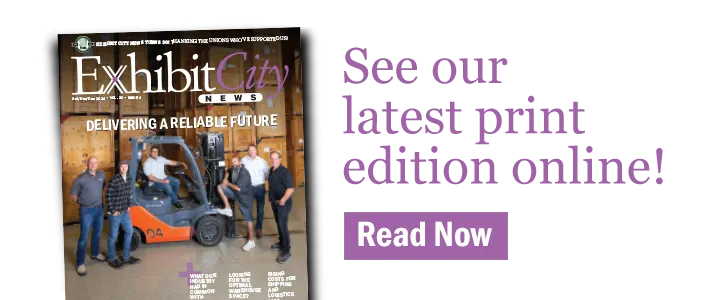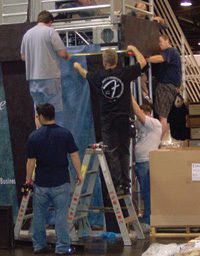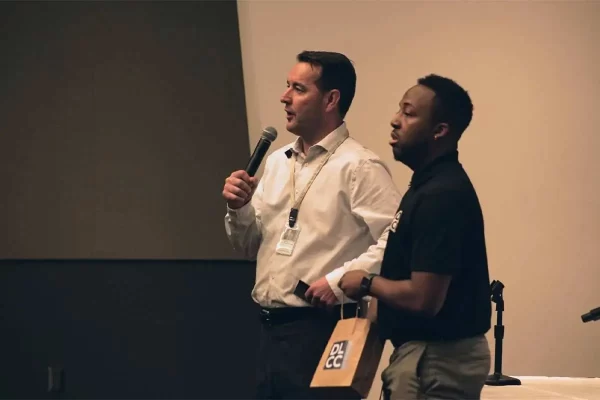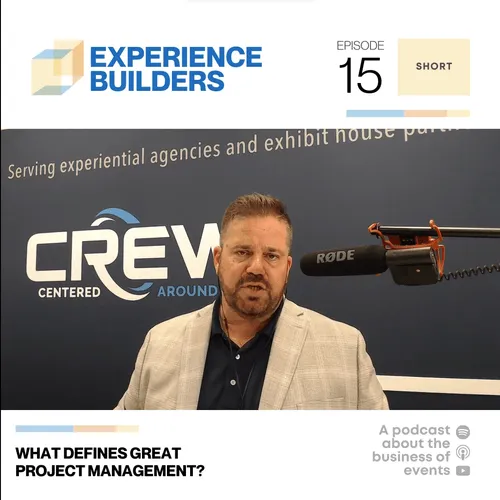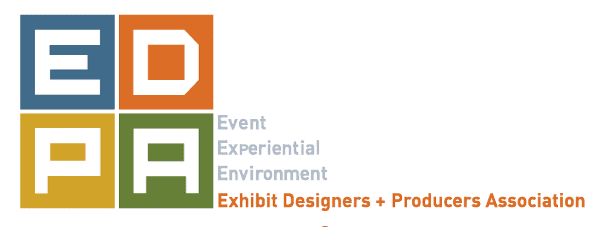The Center for Exhibition Industry Research (CEIR) recently released data suggesting the U.S. exhibition industry is experiencing a historic downturn. This comes as no surprise. Previous state-of-the-industry articles in Exhibit City News have noted that most every segment of the industry is feeling the pinch, including exhibitor-appointed contractors (EAC) such as installation and dismantle (I & D) service providers.
Of course, the recession and exhibitors cutting back on show participation have a lot to do with the dismal business climate for EACs, but depending on who you talk to, there are other issues at play.
Some claim the bundled services offered by general contractors (GCs) are cutting into EACs’ revenues. Others say show organizers are at fault for pressuring general contractors into providing free services, resulting in them going after revenue streams that were once the domain of EACs. In retrospect, the general contractors say they are responding to exhibitors’ desires for better, more economical services.
In addition, exhibit houses and even some transportation service providers are now offering I & D services. Regardless of the reasons behind the EACs’ struggles, it is no longer business as usual for EAC contractors.

“It is time for our industry to reinvent itself,” said Jim Wurm, executive director of the Exhibitor Appointed Contractors Association (EACA). “The days of the same old, same old, are history, or soon to be a thing of the past.”
According to Wurm, the average I & D company experienced a 25 to 30 percent drop in revenue in 2009. A smaller number experienced drops as high as 50 percent. EAC management teams have responded to the downturn by cutting staff, initiating staff furloughs, reducing marketing and traveling budgets, working leaner and meaner to generate new business and looking outside of the tradeshow floor for new business such as road shows, private events and permanent retail and museum installations. Wurm added, however, there is an upside to the current state of the EAC industry. The recession and other external factors are forcing companies to innovate, and in some cases, reinvent themselves. Some companies are surviving, in fact, thriving.
“One of our smaller members (of the EACA), rather than focus entirely on cutting expenses, decided to go out and hustle like crazy for business and ended 2009 up 5 percent,” Wurm added.
While there are differing views as to why the changes are taking place in the EAC segment of the tradeshow industry, Wurm said he believes exhibitors are driving the change. Exhibitors are doing fewer shows and cutting back on booth space while scrutinizing expenses, demanding more transparency from show service providers and expecting greater return on their tradeshow investments. In fact, some exhibitors have become so outraged they have aligned themselves with the Exhibit Industry Council (EIC). In March, the EIC released its “Best Practices Guide” with the goal of uniting all industry stakeholders to support reputable, consistent standards.
The EIC claims “currently, there are conditions in the industry that impede the value exhibitors gain from face-to-face marketing events – specifically conventions and tradeshows.”
Wurm is the spokesman for EIC, which is comprised of industry associations, including Corporate Event Marketing Association (CEMA), EACA, Exhibit Designers and Producers Association (EDPA), Healthcare Convention and Exhibitors Association (HCEA) and Trade Show Exhibitors Association (TSEA). For more information on the EIC and its “Best Practices Guide,” read “EIC Releases Best Practice, Calls to Change Business Model” in this issue on page B7.
“Exhibitors are frustrated by confusing rules, lack of audited attendee information, inconsistent and archaic business practices at tradeshows – all of which lead to costs that escalate out of control,” Wurm wrote in a recent posting on his EACA blog. “These concerns are particularly acute in today’s economy. Our industry must work together to create a service mindset that recognizes and responds to the needs of the customer – the exhibitor.”
Wurm also said EACs are frustrated by the practice of bundling services by the contractors.
“As general contractors see shows shrink in size they increase their competitive pressure for I & D work,” Wurm said. “The ‘leverage’ they commonly use to gain this new business is with their drayage service. They do this by either discounting drayage to gain an I & D job or they promise to get the exhibit in early. Both practices cause great consternation among I & D companies who question the legality of the practice.”
Bundling a Profound Threat
Ron Mestichelli, president of Spectrum Show Services and a 25-year veteran of the I & D industry said indeed the economy has taken a toll on I & D companies, but the bundling of services by GCs is the “most profound threat” to I & D companies. He added the escalating costs of union labor are right up there with bundling. Mestichelli and Sam Miserendino founded Spectrum Show Services in 1992. Headquartered in Bellmawr, NJ, the company provides tradeshow labor and supervision.
“It’s important to note that union labor plays a big part when it comes to an I & D company controlling costs…and exhibitors are concerned about costs,” Mestichelli said. “The way union contracts are set up, the unions get an increase (in rates paid) every year, but in this economy, it is not possible for the I & D companies to increase their rates. This takes a toll on revenues.”
Mestichelli added it is important for unions to work in tandem with the EACs that hire their members, but this is not happening. In many cases, EACs have to reduce rates to remain competitive but union contracts are not negotiable so it puts an extraordinary amount of pressure on EACs to cut expenses in other areas.

Norm Friedrich, president of OCTANORM USA feels that the GCs are also losing more and more revenue streams and are responding to pressure from show organizers and producers to provide more free services.
Based in Lithia Springs, Ga., and established in 1968, OCTANORM supplies structural exhibit systems to the tradeshow industry.
“In the exhibition industry, it is clear that the show organizers are to blame for the ridiculous costs incurred by the exhibitor,” Friedrich said. “The GCs need to find new ways to generate business because the show organizers are putting so much pressure on them to get everything free. They have very few revenue streams left; they are just trying to make up for their losses. Today, GCs are giving away aisle carpet, the registration area, signage and more, just so they can get exclusive contracts for shows. If the show organizers would pay the GCs what they deserve, you would not have the issues with drayage and the bundling issue would go away as well.”
Friedrich explained that show organizers purchase space from the convention halls for “virtually nothing” and then charge exhibitors $30 or more per square foot. He added that show organizers should be happy with the revenue generated from booth space fees.
“Show organizers have their fingers in everything,” he lamented. “They want a piece of this and a piece of that, a commission on this, a commission on that. It needs to stop. The exhibitors are being raped, and they are fighting back by sending silly little pop-up exhibits to shows. It is just going to get worse if show organizers don’t realize the problem and do something about runaway costs.
“If the GCs were paid fairly for the services they provide, they would not have to charge astronomical fees for drayage. They would make a decent living and not step on the toes of the exhibit houses and EACs. The GCs would make their money and everybody would be happy.”
Exhibitors Seeking Partners
Steve Santos, director of I& D for Global Experience Specialists, Inc (GES), said the economy is putting pressure on exhibitors to cut costs and partner with turnkey service providers to ensure that their I & D is closely linked with the production and transportation processes. In the current economic environment, he said it is important for exhibitors to know their I & D company is financially sound and highly trained to execute efficiently.
“Exhibitors are seeking partners that coordinate between design, production shop and the show floor for faster and more effective installation,” Santos said. “Large exhibitors are consolidating to fewer vendors, and in some cases, are single-sourcing in selected areas in order to leverage both the financial benefits and the operational efficiencies of one-stop shopping. We continue to focus on making it easier for existing and prospective clients to do business with GES/ExpoServices.”
Las Vegas-based Global Experience Specialists, Inc. (GES), a Viad Corp (NYSE: VVI) company, is a leading provider of exhibition, event and retail marketing services.
As an owner of Expon Exhibits and one of six owners of Sho-Link, Gene Winther has a broad perspective on the trials and tribulations confronting EACs. He is particularly incensed by the solicitation of his clients and the bundling programs and cost reductions by the GCs he can’t match.
Expon Exhibits is located in Sacramento, Calif. and provides branding and exhibit solutions worldwide while Sho-Link provides exhibit installation services out of its Lake Bluff, Ill. headquarters.
“GCs have an underhanded, profound advantage sitting on the information they get through the associations and through preparing the show floor, giving each booth space a number, and assigning labor, freight, dock doors and what have you,” Winther said. “They control everything. The date, time and labor, when you can receive your freight and when you can set up. There have been times when I was forced to set up on a weekend resulting in my drayage and labor costing time and a half. It is unfair, yet I cannot do anything about it.”
On the flipside, Winther says if he were a GC, he to would be pursuing all revenue-generating opportunities.
“If I was a GC, I can’t say that I would not be caught up at wanting to do these types of things (bundling), especially in the hard times we are experiencing today,” he said. “I don’t blame them (GCs) for doing it, but I regret that they are doing it. They are putting company after company in peril, including independent I & D companies and display builders.”
Aluminum Jungle
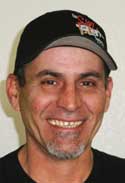
labor activist
While the above individuals focused their comments on the struggles of the EAC companies, Harold Hood, a labor activist, is concerned about the future of the shows and the EAC laborer. He is concerned the lack of work will drive some tradesmen out of the business and if and when business does pick up, there will not be enough qualified technicians to support the shows.
“Labor and quality seem to have been affected the most,” said Hood, who lives in Las Vegas and has been a member of the local union hall for more than 25 years. “Shows are mostly making their money on shipping and freight. Due to this, package deals and systems booths have taken the place of custom I & D work and have turned most tradeshows into an aluminum jungle surrounded by pipe and drape. To me, these have the appeal of a giant indoor swap meet. Structured booths that were once closets and green rooms are now the main display.”
The Road Ahead
So, what is ahead for the EAC/I & D industry? Mestichelli is hopeful the economy will continue to improve and the tradeshow industry will begin to respond by the second half of this year.
“I believe all EACs are faced with the same threats and challenges. However, some industries (exhibitor segments) are healthier and more stable than others. The EACs, which have a larger portion of their business in these sectors like medical, are not as challenged. Regardless, everybody should be diversifying into as many industries as possible and continue to build relationships with exhibit houses.”
Santos believes that today’s exhibitor is looking for an I & D company with experience beyond the tradeshow floor – a company with experience executing special events and in retail and mobile marketing environments. Positive experiences will encourage companies to continue using tradeshows as a forum for branding, marketing and connecting with customers.
“It’s more important than ever to make exhibitors’ lives easier and less complicated,” Santos said.
Winther said he sees hope for some economic recovery later this year or early next year but bundling will continue to be an issue. He added there is really nothing that can be done about bundling today, but EAC companies could protect their current client base by keeping in constant contact with clients, not just by phone or e-mail.
“There are a lot of positives on the horizon, opportunities to grow and succeed,” Winther said. “To succeed in today’s economy, companies have to be the best they can be, have a targeted business plan, hire the best management, train and educate staff, have the best equipment and tools and provide unique services. Also, stay close to your clients, build relationships, talk strategies and tactics.”
Wurm said he believes the tradeshow industry is in for some major changes, particularly on how shows are managed by all parties involved.
“The industry will begin to improve when all of the parties collectively and collaboratively address the needs of the customer (exhibitor),” Wurm said. “It is no more complicated than that. There have been too many decisions made that were based on self-interest and self-preservation, not in the best interest of the customer. Take care of the customer and you will take care of yourself.”




